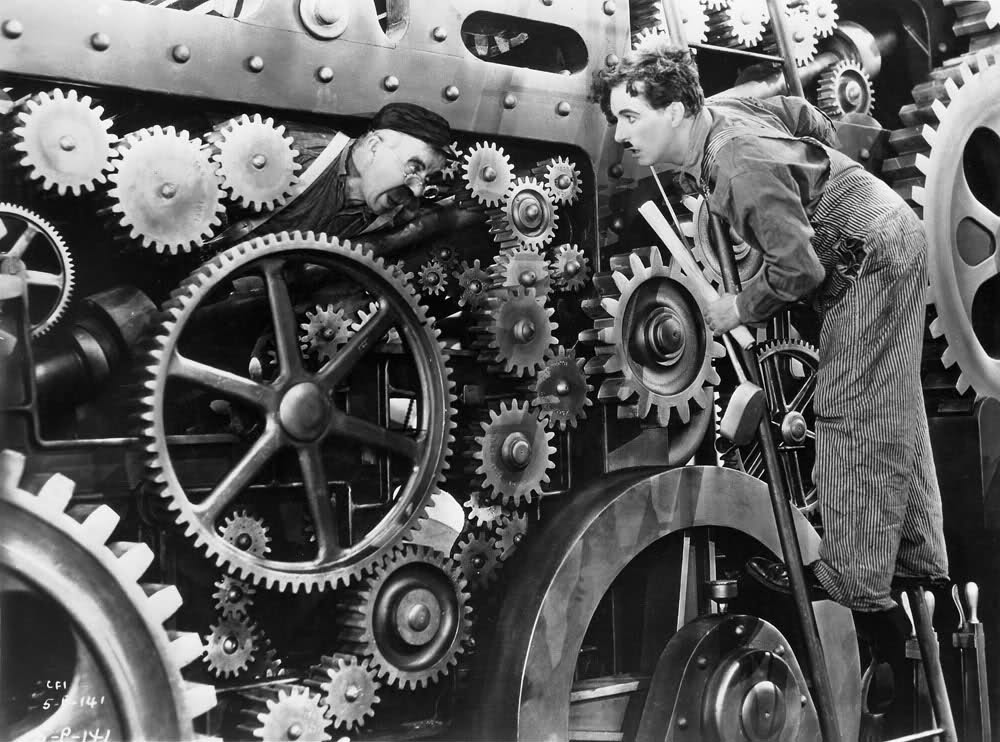The Gold Rush (1925)
City Lights might be Chaplin’s most exquisite achievement, but he never made a funnier or more beloved film than his own personal favorite, The Gold Rush.
Caveat Spectator
Slapstick violence and menace.The high-concept story sends Chaplin’s Little Tramp to the Klondike in search of gold. Almost uniquely in the Chaplin canon, The Gold Rush allows the Tramp the possibility of a truly happy ending, for once successful both in love and money. First, though, he must brave bears, fugitives, starvation, and of course heartbreak.
A smashing success when Chaplin first released it in 1925 at the height of his career, The Gold Rush went on to further heights of popularity in the sound era when Chaplin dusted it off in 1942 and produced a new quasi-sound version, replacing the intertitles with humorous documentary-like narration by Chaplin himself and scoring a new soundtrack for good measure.
In either version, the film is a masterpiece. Purists may prefer the original, but the sound version has its own appeal, and is even more accessible to the youngest viewers.
Kids who’ve seen The Muppets will recognize Chaplin’s classic dinner-roll dance (reprised by Amy Adams). Looney Tunes aficionados may remember homages to the classic gags in which the starving Tramp boils and eats one of his own black boots, and a fellow prospector, delirious from hunger, hallucinates the Tramp as a giant chicken. Then there’s the sequence with the cabin teetering on the cliff, most recently seen in the latest Pirates of the Caribbean movie (better special effects, but visually incoherent).
New from the Criterion Collection, Charlie Chaplin’s comedy classic The Gold Rush is now available on Blu-ray and DVD in a single edition that includes both the original 1925 silent film and Chaplin’s 1942 reworking of the film in a quasi-sound edition, with humorous, documentary-like narration replacing the intertitles.
The 1942 sound version has been digitally restored in high definition, and it looks and sounds great. The 1925 version has been pieced together from different film elements and scored to a new arrangement of Chaplin’s own score, and probably looks and sounds as good as it can, although the toll of time is evident.
Most of the bonus features are brand-new to this edition. The 1925 version comes with an in-depth audio commentary by Chaplin biographer Jeffrey Vance. A 16-minute featurette with Vance and film historian and restorationist Kevin Brownlow sheds light on the restoration and the sigificance of the film across 17 years of Hollywood history. There’s a 20-minute extra on the film’s groundbreaking special effects, and a 25-minute feature on Chaplin’s musical chops and the score he wrote for this film. There’s also a 2002 featurette on Chaplin’s continuing presence and influence in the world today.
Related
City Lights (1931)
City Lights is the quintessential Chaplin film — both the most perfectly crafted and satisfying of all his films, and also the most representative of all the different textures and tones for which Chaplin is remembered, from slapstick and pantomime to pathos and sentiment, farce and irreverence to melodrama and social commentary.

Modern Times (1936)
Silent films were already old-fashioned and out of vogue in 1936 when Charlie Chaplin completed his last silent feature film, Modern Times, almost ten years after the sound revolution began with The Jazz Singer. A silent film consciously made for the sound era, Modern Times is a comic masterpiece that remains approachable today even for movie lovers raised on computer imaging and surround sound.
Recent
- Benoit Blanc goes to church: Mysteries and faith in Wake Up Dead Man
- Are there too many Jesus movies?
- Antidote to the digital revolution: Carlo Acutis: Roadmap to Reality
- “Not I, But God”: Interview with Carlo Acutis: Roadmap to Reality director Tim Moriarty
- Gunn’s Superman is silly and sincere, and that’s good. It could be smarter.
Home Video
Copyright © 2000– Steven D. Greydanus. All rights reserved.